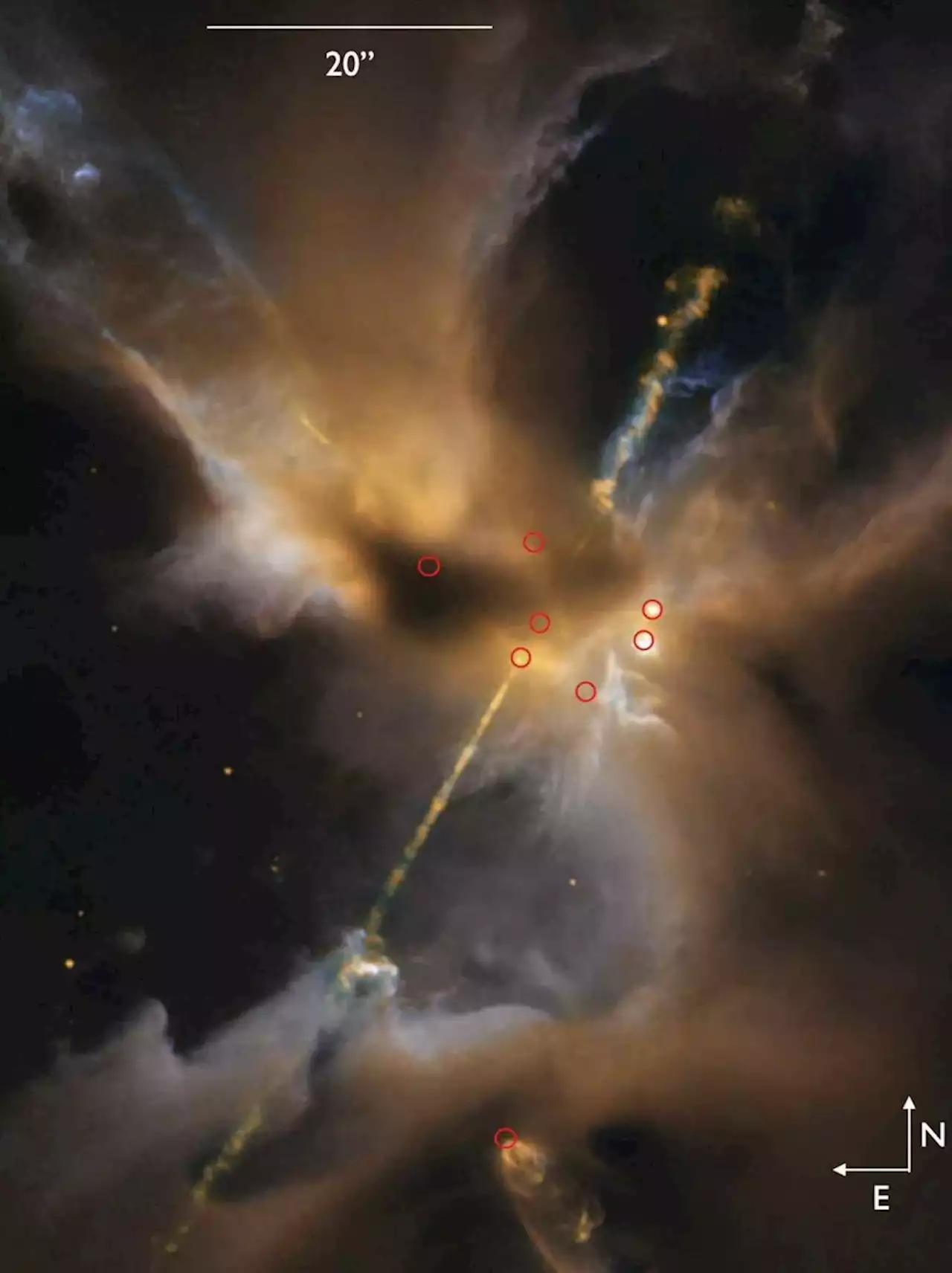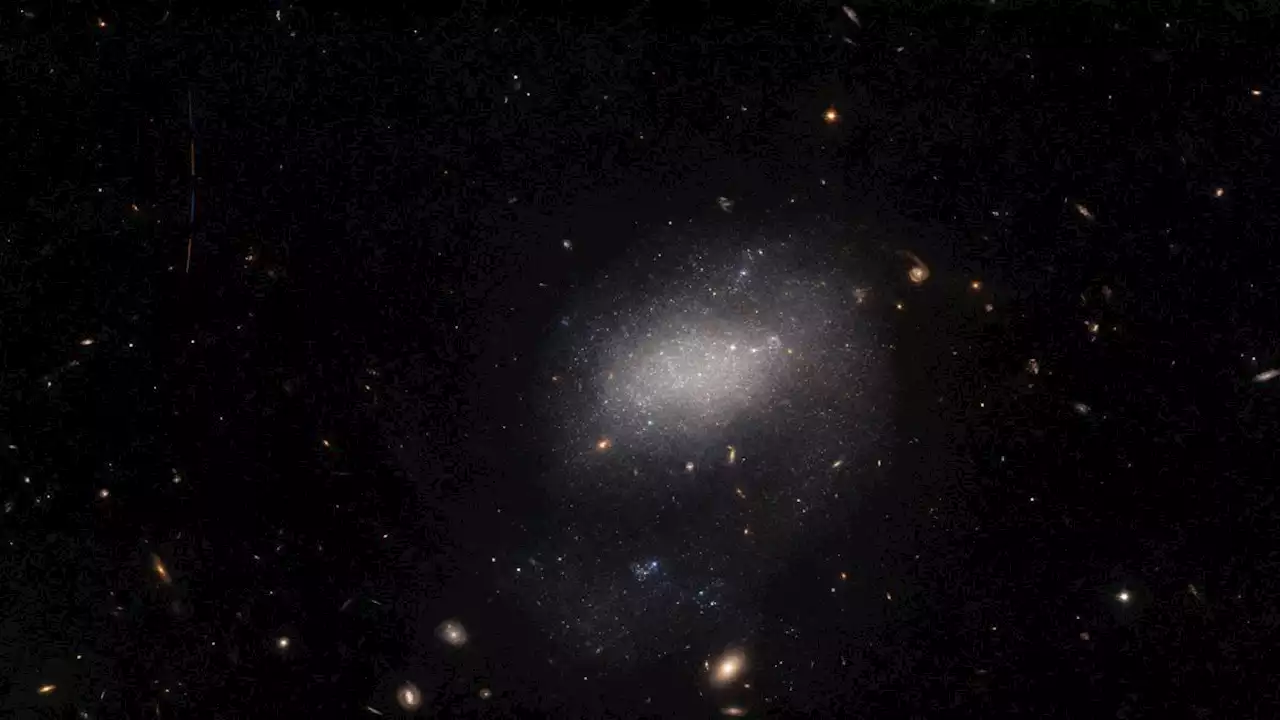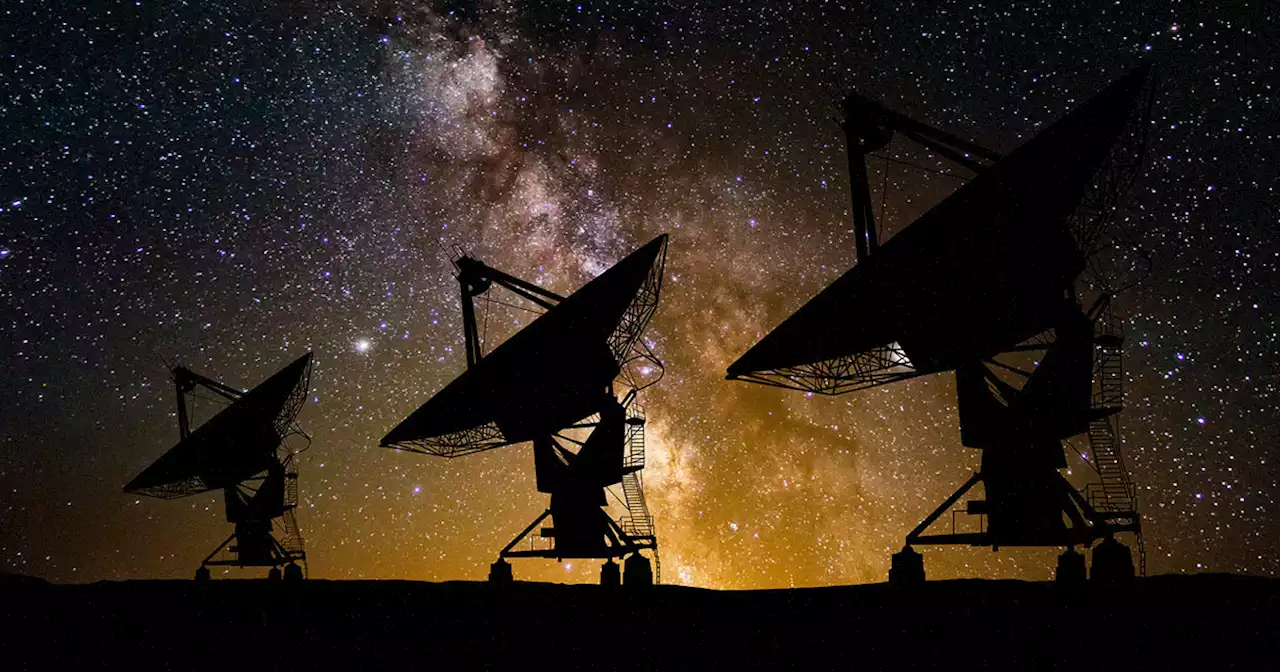Probing galaxies at much greater distances from Earth may now be within reach. How do stars form in distant galaxies? Astronomers have long been trying to answer this question by detecting radio signals emitted by nearby galaxies. However, these signals become weaker the further away a galaxy is fr
One of the dishes of the Giant Metrewave Radio Telescope near Pune, Maharashtra, India. Credit: National Centre for Radio AstrophysicsHow do stars form in distant galaxies? Astronomers have long been trying to answer this question by detecting radio signals emitted by nearby galaxies. However, these signals become weaker the further away a galaxy is from Earth, making it difficult for current radio telescopes to pick up.
Now researchers from Montreal and India have captured a radio signal from the most distant galaxy so far at a specific wavelength known as the 21 cm line, allowing astronomers to peer into the secrets of the early universe. With the help of the Giant Metrewave Radio Telescope in India, this is the first time this type of radio signal has been detected at such a large distance.“A galaxy emits different kinds of radio signals.
“But thanks to the help of a naturally occurring phenomenon called gravitational lensing, we can capture a faint signal from a record-breaking distance. This will help us understand the composition of galaxies at much greater distances from Earth,” he adds.For the first time, the researchers were able to detect the signal from a distant star-forming galaxy known as SDSSJ0826+5630 and measure its gas composition.
According to the researchers, these results demonstrate the feasibility of observing faraway galaxies in similar situations with gravitational lensing. It also opens exciting new opportunities for probing the cosmic evolution of stars and galaxies with existing low-frequency radio telescopes. Reference: “Detection of H I 21 cm emission from a strongly lensed galaxy at z ∼ 1.3” by Arnab Chakraborty and Nirupam Roy, 23 December 2022,
Ireland Latest News, Ireland Headlines
Similar News:You can also read news stories similar to this one that we have collected from other news sources.
 Astronomers Spot an Orphaned ProtostarThe HH 24 complex hosts protostars and their violent interactions with each other, including the ejection of one of their siblings.
Astronomers Spot an Orphaned ProtostarThe HH 24 complex hosts protostars and their violent interactions with each other, including the ejection of one of their siblings.
Read more »
 Surprise asteroid photobombs Hubble telescope image. Can you spot it?The asteroid surprised astronomers as they mapped the Milky Way's nearest galactic neighborhood.
Surprise asteroid photobombs Hubble telescope image. Can you spot it?The asteroid surprised astronomers as they mapped the Milky Way's nearest galactic neighborhood.
Read more »
 Astronomers Detect Radio Signals Emanating From Extremely Distant GalaxyAn international team of researchers have captured radio signals originating from atomic hydrogen from an extremely distant galaxy.
Astronomers Detect Radio Signals Emanating From Extremely Distant GalaxyAn international team of researchers have captured radio signals originating from atomic hydrogen from an extremely distant galaxy.
Read more »
 5 Secrets About Your Social Security Benefits — Best LifePreparing to retire? These are the secrets about your social security benefits you should know, according to financial experts.
5 Secrets About Your Social Security Benefits — Best LifePreparing to retire? These are the secrets about your social security benefits you should know, according to financial experts.
Read more »
 Pro Chefs Share Secrets To Making Microwaved Food Taste AmazingContrary to popular opinion, some microwaved food (if done properly) can taste just as good as if it were cooked on the stove or in the oven.
Pro Chefs Share Secrets To Making Microwaved Food Taste AmazingContrary to popular opinion, some microwaved food (if done properly) can taste just as good as if it were cooked on the stove or in the oven.
Read more »
